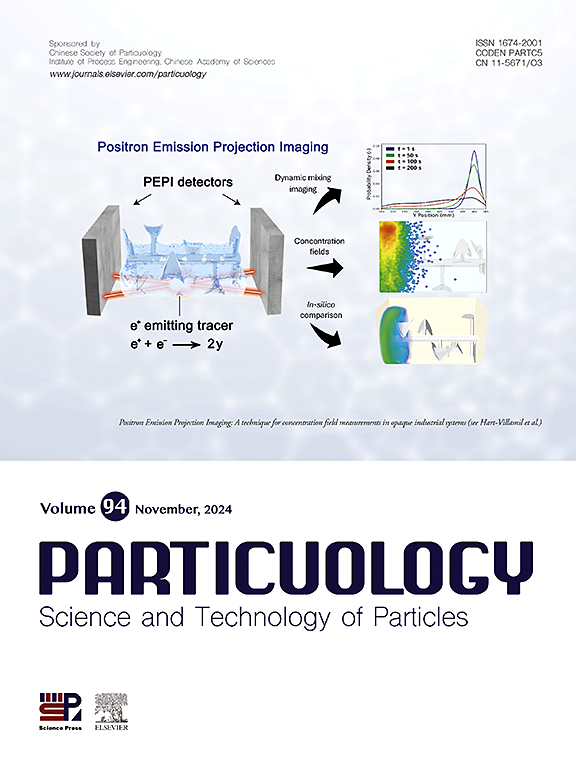Data driven analysis of particulate systems for development of reliable model to determine drag coefficient of non-spherical particles
IF 4.1
2区 材料科学
Q2 ENGINEERING, CHEMICAL
引用次数: 0
Abstract
Non-spherical particles are extensively encountered in the process industry such as feedstock or catalysts e.g., energy, food, pharmaceuticals, and chemicals. The design of equipment used to process these particles is highly dependent upon the accurate and reliable modeling of hydrodynamics of particulate media involved. Drag coefficient of these particles is the most significant of all parameters. A universal model to predict the drag coefficient of such particles has not yet been developed due to the diversity and complexity of particle shapes and sizes. Taking this into consideration, we propose a unique approach to model the drag coefficient of non-spherical particles using machine learning (ML) to move towards generalization. A comprehensive database of approximately five thousand data points from reliable experiments and high-resolution simulations was compiled, covering a wide range of conditions. The drag coefficient was modeled as a function of Reynolds number, sphericity, Corey Shape Factor, aspect ratio, volume fraction, and angle of incidence. Three ML techniques—Artificial Neural Networks, Random Forest, and AdaBoost—were used to train the models. All models demonstrated strong generalization when tested on unseen data. However, AdaBoost outperformed the others with the lowest MAPE (20.1%) and MRD (0.069). Additional analysis on excluded data confirmed the robust predictive abilities and generalization of the proposed model. The models were also evaluated across three flow regimes—Stokes, transitional, and turbulent—to further assess their generalization. A comparative analysis with well-known empirical correlations, such as Haider and Levenspiel and Chien, showed that all ML models outperformed traditional approaches, with AdaBoost achieving the best results. The current work demonstrates that new generated ML techniques can be reliably used to predict drag coefficient of non-spherical particles paving way towards generalization of ML approach.

求助全文
约1分钟内获得全文
求助全文
来源期刊

Particuology
工程技术-材料科学:综合
CiteScore
6.70
自引率
2.90%
发文量
1730
审稿时长
32 days
期刊介绍:
The word ‘particuology’ was coined to parallel the discipline for the science and technology of particles.
Particuology is an interdisciplinary journal that publishes frontier research articles and critical reviews on the discovery, formulation and engineering of particulate materials, processes and systems. It especially welcomes contributions utilising advanced theoretical, modelling and measurement methods to enable the discovery and creation of new particulate materials, and the manufacturing of functional particulate-based products, such as sensors.
Papers are handled by Thematic Editors who oversee contributions from specific subject fields. These fields are classified into: Particle Synthesis and Modification; Particle Characterization and Measurement; Granular Systems and Bulk Solids Technology; Fluidization and Particle-Fluid Systems; Aerosols; and Applications of Particle Technology.
Key topics concerning the creation and processing of particulates include:
-Modelling and simulation of particle formation, collective behaviour of particles and systems for particle production over a broad spectrum of length scales
-Mining of experimental data for particle synthesis and surface properties to facilitate the creation of new materials and processes
-Particle design and preparation including controlled response and sensing functionalities in formation, delivery systems and biological systems, etc.
-Experimental and computational methods for visualization and analysis of particulate system.
These topics are broadly relevant to the production of materials, pharmaceuticals and food, and to the conversion of energy resources to fuels and protection of the environment.
 求助内容:
求助内容: 应助结果提醒方式:
应助结果提醒方式:


